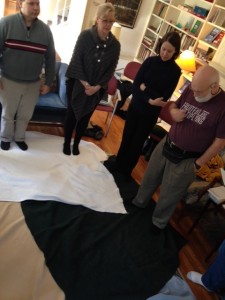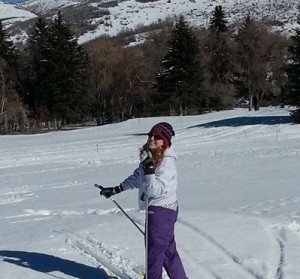by Rev. Emily E. Ewing, ELM board member and convener of the Proclaim program
One of the reasons I love being a part of Extraordinary Lutheran Ministries (ELM) is that we as an organization believe that difference makes a difference. Because of this belief 6 years ago ELM formally committed to ongoing anti-oppression work. We dedicate 4-8 hours to training and/or education at one of our two in-person board meetings each year. We focus on a variety of areas of anti-oppression work.

This year the Rev. Gordon Straw, one of our ELM Board members and a member of the Brothertown Indian Nation, led our time together. Gordon provided information, led an experiential exercise, and guided conversation about American Indians and Alaska Natives both in the ELCA and the larger historical context of the land we now occupy.
As a church and theology nerd, I really appreciate how Gordon framed theology from both a modern Western Christian perspective and from a Native perspective. Modern Western Christian theology typically understands humanity’s relationship with God and creation as hierarchical in which God is at the top of the hierarchy, humans are just below, and living and then non-living beings below that.
From a Native perspective, the worldview is more circular as we are all related to each other, from humans and animals to plants, rocks, wind, and the four directions. Within Lakota tradition this is expressed in the term “Mitakuye O’yasin,” which translates as “all my relations.” Our existence as humans is not a separate thing from the existence of all of God’s creation; instead, we are interconnected.

As board member Margaret Moreland pointed out, “We all are living on land that was home to indigenous people before Europeans came here. Gordon brought to life the consequences of the European take-over for Indians in the past and right now.” The land we are on is sacred land because it is part of God’s good creation. It is also sacred land because it gives life and nourishment to us. It is sacred, importantly, because people have lived on it in harmony with creation and in conflict with creation and each other not only since white people arrived, but since long before then as well.
Even those of us who knew some of the history of native peoples learned a lot. One of the things that I learned is that individuals will have an opportunity this year in the ELCA at our synod assemblies and hopefully at our Churchwide Assembly as well, to support Bp. R. Guy Erwin, the Southwest California Synod, and the American Indian/Alaska Native Lutheran Association in passing a resolution repudiating the doctrine of discovery.
The church has been complicit in much of the harm done to native peoples as white settlers moved across this land. One step that we can take as people working to be allies with Native communities is not only to learn our collective and their particular histories anew, but also to renounce the doctrine of discovery, which declared that European discoverers were Christian and “civilized” and the Native people were not, and therefore any lands discovered by Europeans were owned by Europeans. Native peoples were merely inhabitants on the land.
Gordon also shared with us two important news sources that I am looking forward to exploring in more depth: the National Congress of American Indians (ncai.org) and indianz.com. I was also encouraged to hear about the ELCA Native American Ministries Endowment Fund, to support the important ministry done by and in native communities throughout the ELCA. Extraordinary Lutheran Ministries made a gift to this fund in honor of Gordon’s ministry and in thanks for the work he did with us at our meeting.
 Rev. Emily E. Ewing serves as pastor of Trinity Fellowship (ELCA) and First Presbyterian Church in Rushford, Minnesota. Emily comes from land originally inhabited by the Ute and the mountains they knew as the Shining Mountains.
Rev. Emily E. Ewing serves as pastor of Trinity Fellowship (ELCA) and First Presbyterian Church in Rushford, Minnesota. Emily comes from land originally inhabited by the Ute and the mountains they knew as the Shining Mountains.


